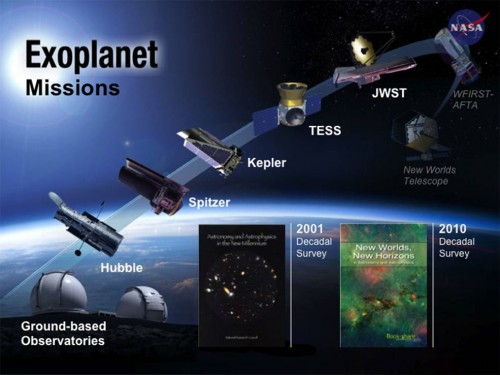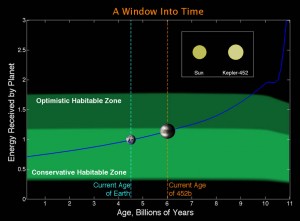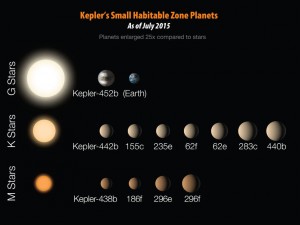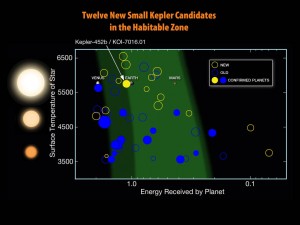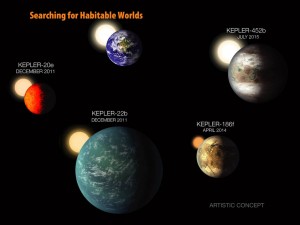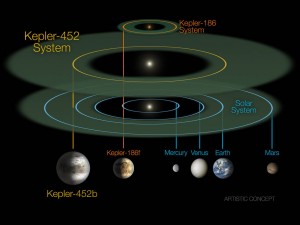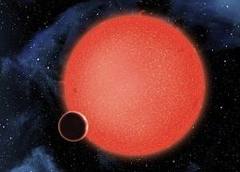NASA’s Kepler mission claims discovery of “Earth 2.0”
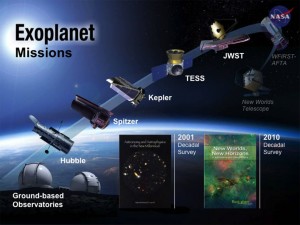 In a press conference yesterday [1,2], July- 23- 2015, NASA announced the discovery of a planet which has the closest match of any exoplanet ever examined to Earth. The planet, called Kepler-452b, is likely rocky and orbits in its star’s habitable zone where liquid water can exist.
In a press conference yesterday [1,2], July- 23- 2015, NASA announced the discovery of a planet which has the closest match of any exoplanet ever examined to Earth. The planet, called Kepler-452b, is likely rocky and orbits in its star’s habitable zone where liquid water can exist.
Its characteristics are
- orbits a star very similar to the Sun
- distance from Earth to Kepler-452b: 1400 light-years
- host star in the constellation of Cygnus is estimated to be 1.5 billion years older than our sun
- Kepler-452b is 60% larger than Earth
- surface gravity is 2x that of Earth
- orbiting a Sun-like star in a 385 day orbit period
- a fairly good chance of being a rocky planet, with an atmosphere thicker than Earth’s, with lots of water, either in the atmosphere, in oceans or both, and with active volcanoes
- in the habitable zone of its star, suitable for the existence of liquid water
- Kepler-452b receives 10 percent more starlight than Earth
Since rocketing into space in 2009, NASA’s planet-hunting Kepler space telescope has discovered 4696 planet candidates, 12 of which are small planets in their stars’ habitable zone [3, 4].
Kepler-452b was referred by mission Kepler scientists as “Earth 2.0” (a close Earth analog). Closest matches to Earth-like exoplanets prior to Kepler-452b were
- Kepler-20e , smaller than Earth, but very close to its star–way to hot for life (December of 2011)
- Kepler-22b, in the habitable zone of a Sun-like star, but twice the size of Earth
- Kepler-186f , very near the size of Earth and in the habitable zone of its star, but the star is an M-dwarf, much cooler than the Sun
- early in its mission, Kepler managed to find a handful of supersize cousins of Earth, most of them in clement orbits around smaller, cooler, quieter stars than the sun.
Mission Kepler detects planets through “transits,” watching for the dips in starlight caused by the shadows of transiting planets.
[1] NASA’s Kepler Mission Discovers Bigger, Older Cousin to Earth
[4] List of Kepler discoveries

